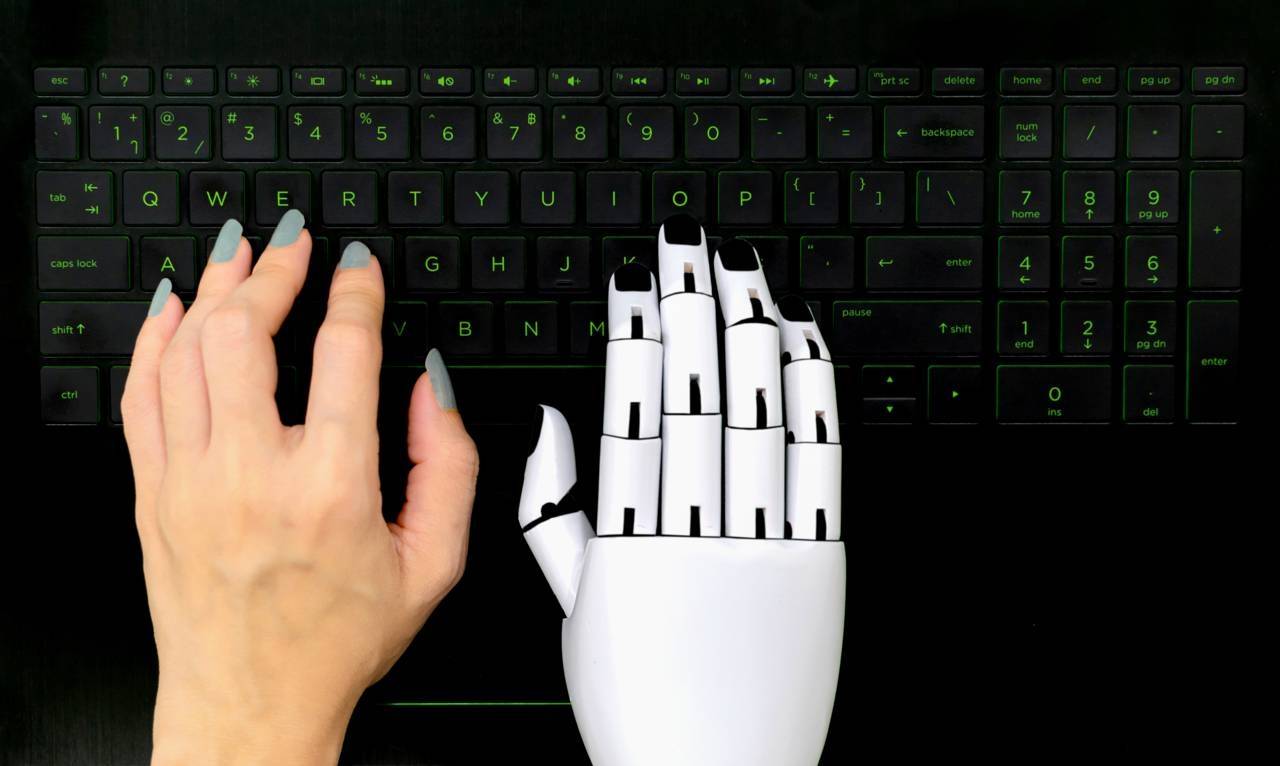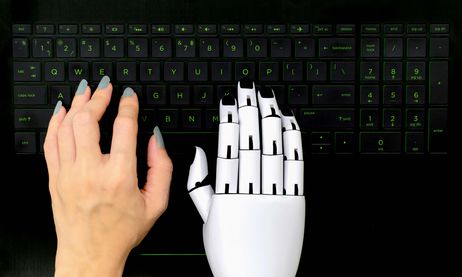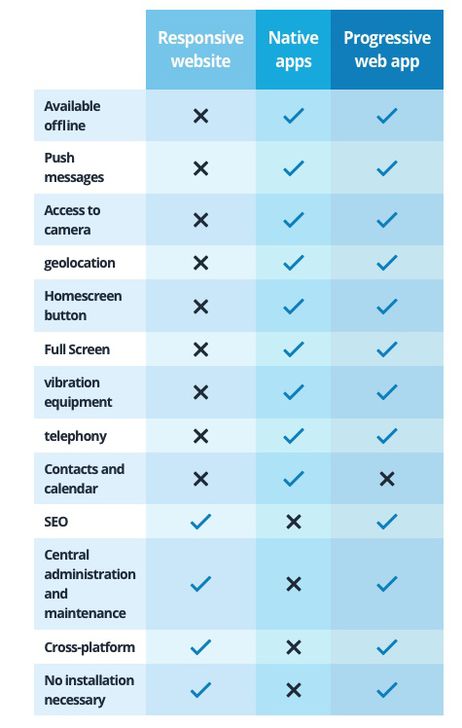The Nine Trends Driving B2B E-commerce for 2020 part 2

At the start of a new decade it is worth bearing in mind that online still accounts for relatively little of total B2C or B2B sales. In B2B e-commerce, Europe presents the biggest opportunity for growth; the Continent makes up just 3% of global B2B e-commerce sales, compared with 30% for China and 10% for the US - although its combined GDP outstrips both.
Our first blog post discussed how B2B online shops are morphing into service platforms; self-service portals, the omnichannel and how marketplaces are becoming a permanent fixture in B2B. In this second part on the developments in B2B e-commerce, we look at the technologies of headless architecture, PWAs, robot text creation and the procurement approach known as punchout.

6. Punchout: ERP integration shortens ordering processes
An effective way to shorten the purchasing process and boost customer loyalty is punchout ─ more than a trend, for larger businesses, this is a B2B must. Punchout e-commerce platforms give buyers access to external catalog data from their own ERP system. This eliminates the need to import supplier catalogs directly into the procurement system, saving time and expense.
Punchout is good news for B2B suppliers too. Because the online shop is integrated with the customer's ERP system, the products are available as an online catalog without shop operators having to make any additional effort. Also, the actual purchasing process is handled in the ERP system of the buyer.
Incidentally, the basis for punchout is the Open Catalog Interface (OCI). ERP systems and purchasing platforms can exchange catalog data records via OCI. The interface was originally developed by SAP but can also be made to work with many other ERP systems. Because of the huge benefits, an increasing number of ERP providers and e-commerce platforms now support the open standard to make their systems fit for OCI and punchout.
The OCI standard is used to optimize the ordering process. The biggest attraction for buyers is that orders are immediately entered in their ERP system. Punchout implementation should also offer the option of electronically accepting orders from the buyer's ERP (for example, as an iDoc from SAP systems) and sending it straight on to the supplier's ERP system to fire the starting pistol on fulfilment.
7. Progressive web apps are much more than hype
Progressive Web Apps (PWAs) take the concept of responsive websites to the next level by enriching mobile pages with functionalities that used to be available only in native apps. With a PWA, a customer can search for local products or services using the GPS sensor of his or her own smartphone. Another clever implementation of a PWA is to have buyers use their smartphone camera to scan barcode stickers on the product ─ to place a quick repeat order, for example.
A key advantage of PWAs is that apps no longer have to be developed for every operating system. The starting point is the responsive website, with the desired extra features and functionalities added à la carte by PWAs.
Three years ago, Gartner believed that by 2020 ─ now, in other words ─ half of all apps would be replaced by PWAs. Some analysts cranked up the hype by predicting the end of the app store. It hasn't played out that way ─ not yet. We list PWAs as a trend because we believe their time will come because the advantages are so obvious and overwhelming. Browser manufacturers share this vision and are implementing more and more PWA functionalities.

Source: Atmina
8. Headless commerce makes businesses more flexible
An e-commerce platform is designed to optimize the display and operation of your shop on desktops and mobile devices. But this is not static. In addition to the desktop and mobile websites, other customer touchpoints are fast gaining in popularity: shopping on social media, B2B marketplaces and shops, wearables, voice commerce and the Internet of Things. And it is safe bet that there are likely to be yet more channels in the not too distant future.
Just like in content management, where headless and decoupled approaches are more an evolution than a replacement for content management platforms, the headless approach can enable B2B sellers to react quickly to the new requirements in omnichannel commerce. In headless, front and backend are decoupled. The shop systems run the backend as usual, but the frontends are developed, adapted and populated individually for each touchpoint and connected to the backend via an API.
Headless commerce paves the way for very fast and flexible innovation. Each channel is served optimally because changes can be made quickly without disrupting other front- or backend processes.
Some shop systems even rely on an "API first" principle with a microservice architecture that uses a small app for every little functionality. This is not relevant for every B2B seller and is rarely absolutely necessary ─ a good thing because "API first" massively increases the development effort and the complexity of the projects.
However, e-commerce platforms that support headless are good news as they make a B2B seller markedly more agile while also preparing it for future requirements.
9. Robots write content for the online shop
If you offer many products in many variants, it is time-consuming and difficult to write high-selling texts for each category and specification. Enter the text robot. These are now capable of using structured data to generate easy-to-read and search engine-relevant product descriptions.
Two different approaches have emerged: Natural Language Generation and template-based text generation, in which blanks and sentence patterns are used. In both scenarios, B2B sellers have to do some preliminary legwork by either teaching the robot the basics such as the desired language style and choice of words, or by creating templates.
The latest text robots produce unique product content in any number of variations. What is more, they do so instantly without blatantly repeating themselves. In a competitive environment where search engine visibility is (almost) everything, text robots can make life a lot easier for B2B sellers.
Multinationals such as Liebherr and Bosch think so too and are relying on robots for content generation.
Text robots become economical for catalogs that number at least between 500 to 1,000 products.
Conclusion
The recent B2B developments towards digitization, automation and customer centricity are as relevant as ever. What is also continuing is the habit of B2B to adopt concepts and practices pioneered and increasingly perfected in B2C ─ omnichannel and marketplaces being prime examples. For all e-commerce, headless offers the best UI and functionalities for all your sales channels.
Accelerating processes is another crucial trend in B2B e-commerce. To head off the competition, B2B has to support its customers with short purchasing processes and quick reorders. This can be achieved by ordering directly from the ERP system via punchout or with convenient PWAs that extend the range of online platforms with completely new ordering functions.
Flexibility is all. Customers demand it and you need it. B2B e-commerce systems have to be able to roll with the punches as technology and customer expectations change. On the one hand, e-commerce applications can function as a cohesive platform for purchasing, content and services, or they can provide functionalities via OCI/ punchout or headless commerce ─ either way, what is paramount is that you don't lose sight of the customer and do everything you can to accommodate the way they like to buy from you.
Want to discover the business benefits of the integration between business systems and B2C and B2B e-commerce websites? Download our eBook: E-commerce Integration with ERP and other Business Systems (PIM and CRM) for tips, tricks and gotchas.
Integration Considerations: Tips, Tricks and Gotchas
E-commerce and ERP Integration
Learn how to select and connect your project to various business systems while understanding the wider, ERP, CRM and PIM landscape. We provide tips and best practices as well as highlight common use cases.

